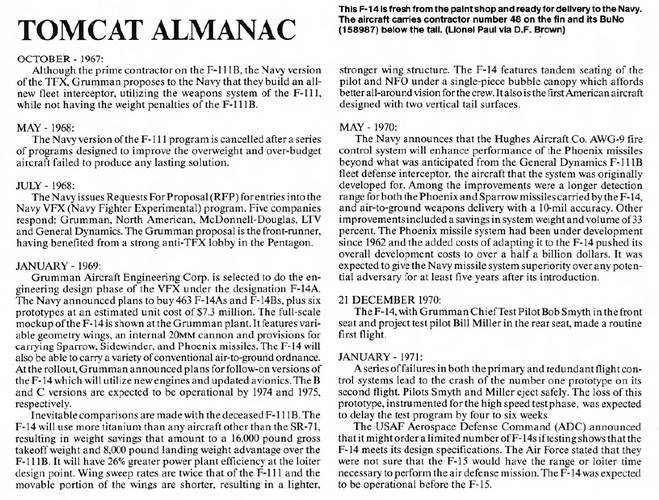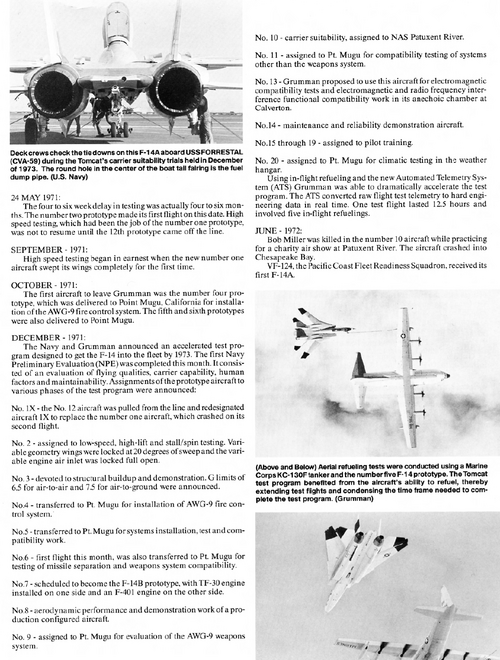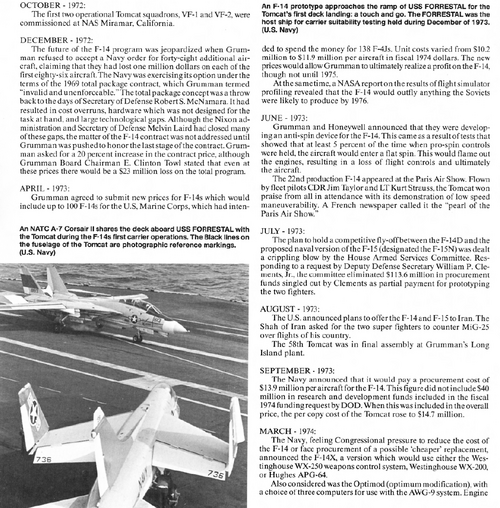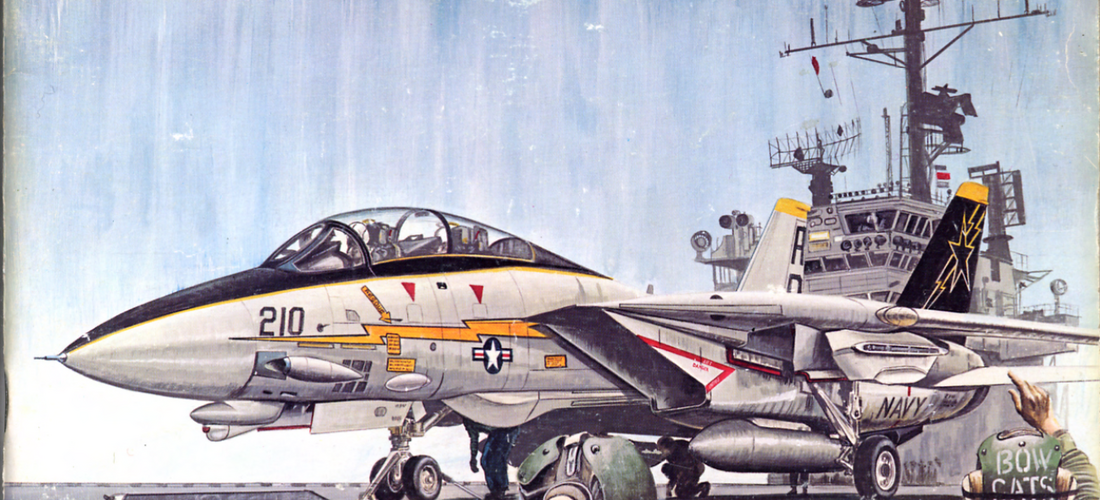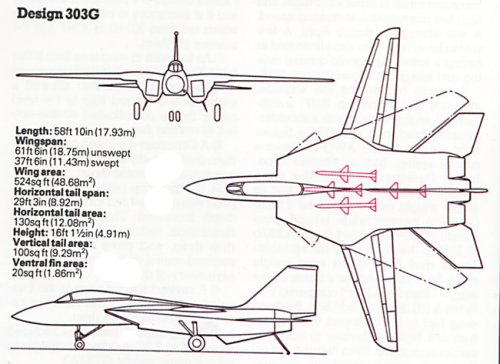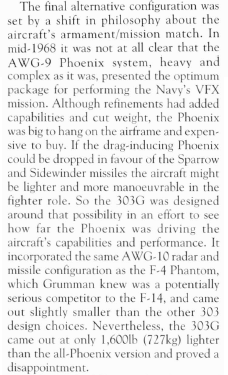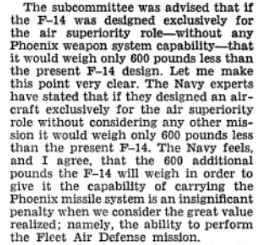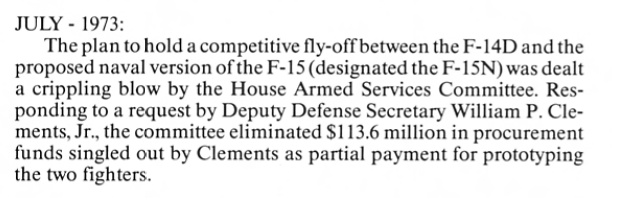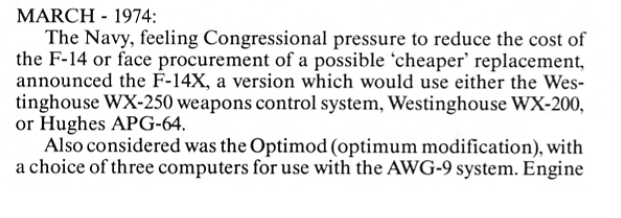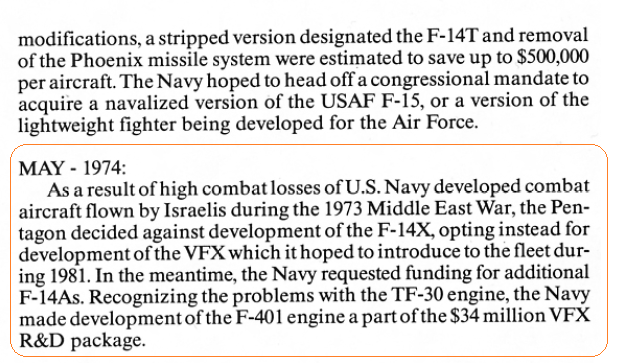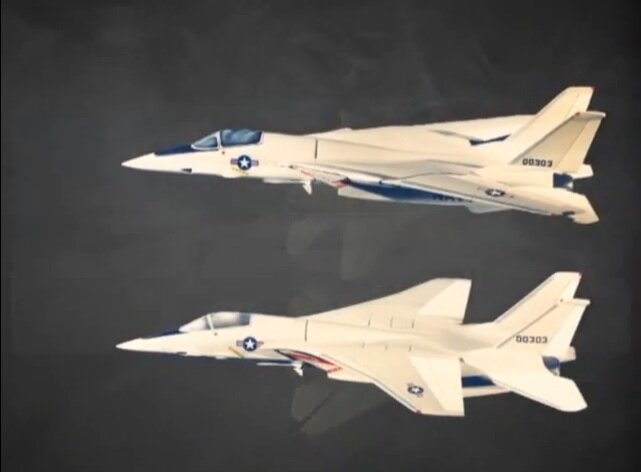Model 303G was basically 303E stripped of the Phoenix-related systems, and equipped with the AWG-10/Sparrow combination (I would expect that AWG-10 would be enlarged to match the volumetric capabilities of Tomcat's nose). There were these famous drawings of different Model 303 alternatives (although I have some doubts about how accurate they are, for example, the 303F drawing looks completely different from the available photos of Grumman's model):
View attachment 682779
Further information can be found in a book by David Baker "Grumman F-14 Tomcat" from Crowood Aviation Series:
View attachment 682780
The cited differences in weight are surprisingly small, as 727 kg seems to be a pretty negligible difference. However, the alternative sources are stating even smaller values, e.g. looking into Congressional Records and the statement of Senator Cannon, who was (I think) the chairman of the special Tactical Airpower Subcommittee, we can find (18.09.1969):
View attachment 682781
I would expect that these values might not be exact, as probably it wasn't in Grumman's best interest to show that removing Phoenix from F-14 would result in a much better-performing aircraft. On the other hand, one of the main differences between F-111B and F-14 was that in the latter the Phoenix missiles were considered as overload conditions (see e.g.
Tommy Thomason's blog), with most of the Phoenix-supporting systems being placed in the external pallets. Consequently, F-14 was already tailored from the viewpoint of structure's strength for the fighter escort configuration (with Sparrows), which is the same as in the case of Model 303G.

